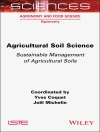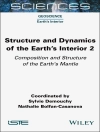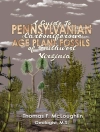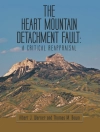This proceedings contains a selection of peer-reviewed papers presented at the IAG Scientific Assembly, Postdam, Germany, 1-6 September, 2013. The scientific sessions were focussed on the definition, implementation and scientific applications of reference frames; gravity field determination and applications; the observation and assessment of earth hazards. It presents a collection of the contributions on the applications of earth rotations dynamics, on observation systems and services as well as on imaging and positioning techniques and its applications.
قائمة المحتويات
Part 1 – History session.- From a regional project to an international organization: the ”Baeyer-Helmert-Era” of the International Association of Geodesy 1862–1916.- IAG history: The years of World Wars and aftermath (1917 – 1959).- Part 2 – Definition, Implementation and Scientific Applications of Reference Frames.- Epoch reference frames as short-term realizations of the ITRS Datum stability versus sampling.- Status of the IGS-TIGA Tide Gauge Data Reprocessing at GFZ.- On the impact of correlation information on the orientation parameters between celestial reference frame realizations .- Quality evaluation of the weekly vertical loading effects induced from continental water storage models.- Impact of time variable gravity on annual sea level variability from altimetry.- Development of a Combination Procedure for Celestial Reference Frame Determination.- Improved Parameter Estimation of Zenith Wet Delay Using an Inequality Constrained Least Squares Method.- The realization of asemi-kinematic datum in Greece including a new velocity model.- Simulated VLBI satellite tracking of the GNSS constellation – observing strategies.- On the development and implementation of a semi-dynamic datum for Indonesia.- Regional Model to Estimate Vertical Deformations due to Loading Seasonal Changes.- Expression of the Local GPS Solution in the Regional Reference Frame ETRF2000.- Impact of Antenna Phase Centre Calibrations on Position Time Series: Preliminary Results.-Optimized parameterization of VLBI auxiliary parameters in least-squares adjustment: preliminary results.- The Antarctic regional GPS network densi_cation – status and results.- Impact of celestial datum de_nition on EOP estimation and CRF orientation in the global VLBI session IYA09.- A High-Precision Deformation Model to support Geodetic Datum.- Interaction between subdaily Earth rotation parameters and GPS orbits.- A geocenter time series from a combination of LAGEOS and GRACE observations.- DPOD2008 – A DORIS-oriented Terrestrial Reference Frame for Precise Orbit Determination.- SIRGAS core network stability.- Part 3 – Gravity Field Determination and Applications.- Numerical Computation of Point Values, Derivatives, and Integrals of Associated Legendre Function of the First Kind and Point Values and Derivatives of Oblate Spheroidal Harmonics of the Second Kind of High Degree and Order.- Developments in the implementation and use of Least-Squares Collocation.- The impact of using Jason-1 and Cryosat-2 geodetic mission altimetry for gravity field modeling.- Mohorovicic discontinuity depth analysis beneath North Patagonian Massif.- The A10 Gravimeter Total Uncertainty Budget Estimation: A Case Study Using The A10-020.- Analysis of the discrepancies between the Brazilian vertical reference frame and GOCE-based geopotential model.- Regional gravity field modeling by radially optimized point masses: case studies with synthetic data.- Covariance Analysis and Sensitivity Studies for GRACE Assimilation into WGHM.- Accuracy estimation of the If E gravimeters Micro-g La Coste g Phone-98 and ZLS Burris Gravity Meter B-64.- Least-squares prediction of runo_ over ungauged basins.- Improving and validating gravity data over ice-covered marine areas.- Estimation of the geopotential value W0 for the Local Vertical Datum of Argentina using EGM2008 and GPS/Levelling data.- A feasibility study on the unification of the Italian height systems using GNSS-leveling data and global satellite gravity models.- Analysis of the discrepancies between the vertical reference frames of Argentina and Brazil.- Validation of GOCE/GRACE satellite only and combined global geopotential models over Greece in the frame of the GOCESea Comb project.- Height system unification based on the fixed GBVP approach.- Airborne and shipborne gravimetry at GFZ with emphasis on the GEOHALO project.- A comparison of the performance of medium- and high-quality inertial systems grades for strapdown airborne gravimetry.- Assessmentof the recently released GOCE-based models in terms of spectral and spatial resolution.- Assessment of GOCE models over Mexico and Canada and impact of omission errors.- Verifying the accuracy of recent Global Geopotential Models in north-west Mozambique.- Impact of numerical weather models on gravity field analysis.- Practical aspects of the uni_cation of height system realizations in Europe.- Towards a consistent estimation of the Earth’s gravity field by combining normal equation matrices from GRACE and SLR.- Tailored Reference Geopotential Model for Africa.- Towards an Alternative Geoid Fitting Technique.- Part 4 – Observing, Understanding and Assessing Earth Hazards.- Geodetic Imaging by Airborne Li DAR: A Golden Age in Geodesy—A Bonanza for Related Sciences.- Analysis of Precipitable Water estimates using permanent GPS station data during the Athens heavy rainfall on February 22th 2013.- Airborne Li DAR data as a base for the Open space 3D model construction.- An Inventory of Surface Movements in the Upper Rhine Graben area, Southwest Germany, from SAR-Interferometry, GNSS and Precise Levelling.- On the use of bistatic Tan DEM-X images to quantify volumetric changes of active lava domes.- On integration of geodetic observation results for assessment of land subsidence hazard risk in urban areas of Indonesia.- Observation of triggering factors and development of landslides by borehole tiltmeters on the high bank of the River Danube in Dunaszekcső, Hungary – a case study Gyula Mentes.- Coastal Sea Level Monitoring in Indonesia – Connecting the Tide Gauge Zero to Leveling Benchmarks.- Investigation on the postseismic deformation associated with the 2011 Tohoku earthquake based on terrestrial and seafloor geodetic observations – to evaluate the further seismic hazard potential on the plate interface beneath the northeastern Japanese Islands.- Rapid coseismic fault determination of consecutive large interplate earthquakes: The 2011 Tohoku-Oki sequence.- GRACE gravity data to enhance the modeling of coseismic slip distribution for the 2011 Tohoku-Oki earthquake.- Local-scale precipitable water vapor retrieval from high-elevation slant tropospheric delays using a dense network of GNSS receivers.- Observing and modelling the high water level from satellite radar altimetry during tropical cyclones.- Part 5 – Science and Applications of Earth Rotation and Dynamics.- Outline of the chronology of the developments of geodynamic investigations connected with Earth rotation studies in the XX century – authors’ perspective.- Hydrological excitations of polar motion from GRACE gravity field solutions.- Rapid UT1 estimation by combining VLBI Intensives with GNSS.- Reference frame-induced errors in VLBI Earth orientation determinations.- The New IAU/IAG Joint Working Group on Theory of Earth Rotation.- Part 6 – Observation Systems and Services.- Satellite Laser Rangin, A tool to realize GGOS?.- Positio NZ-PP — an online GPS processing application for New Zealand.- Geodetic monitoring networks: GNSS-derived Glacier Surface Velocities at the Global Change Observatory Inylchek (Kyrgyzstan).- Scheduling Scenarios for VLBI Observations of Satellites.- GGOS Bureau for Standards and Conventions: Inventory of Standards and Conventions for Geodesy.- Monitoring of antenna changes at IGS stations in Iceland.- The Status of GNSS Data Processing Systems to Estimate Integrated Water Vapour for Use in Numerical Weather Prediction Models.- GOP-Trop DB developments for tropospheric product evaluation and monitoring – design, functionality and initial results.- BCAL/UFPR – The GNSS Antenna Calibration Service of Latin America.- Solar corona electron densities from VLBI and GIM data.- Status of TIGA activities at the British Isles continuous GNSS Facility and the University of Luxembourg.- The King Edward Point Geodetic Observatory, South Georgia, South Atlantic Ocean, A First Evaluation and Potential Contributions to Geosciences.- The International DORIS Service(IDS) – Recent developments in preparation for ITRF2013.- Part 7 – Imaging & Positioning Techniques and Applications.- Combined GPS, Bei Dou, Galileo, and QZSS single-epoch, single-frequency RTK Performance Analysis.- Metrology for long distance surveying – a joint attempt to improve traceability of long distance measurements.- On The Handling Of Outliers In The Gnss Time Series By Means Of The Noise And Probability Analysis.- Real-time Precise Point Positioning using Bei Dou.- GFZ Global Multi-GNSS Network and Data Processing Results.- A Conditional Equation for Minimizing the GDOP of Combined GNSS Constellation and Its Boundary Solution with Geostationary Satellites.- Near real-time coordinate estimation from double-difference GNSS data, A case study for the National Multi-Hazard Early Warning System in the Sultanate of Oman.- Analyzing the variation of precipitable water vapor with ground-based GPS over Taiwan.- Predicting and correcting scale induced biases resulting from the application of regional orbit and clock corrections.- Determination of Optimal Trajectories for an Inland Water Traffic Manœuvre Guidance System based on Sensor-fused PNT-data.- Application-driven critical values for GNSS ambiguity acceptance testing.- An innovative method to predict and to detect the false fixing of the GNSS ambiguity phase.- GNSS antenna impact on the resulting multipath effects in carrier-phase and signal amplitude.- Attitude Determination and Relative Positioning for LEO Satellites Using Arrays of GNSS Sensors.- Combination of ground- and space-based GPS data for the determination of a multi-scale regional 4-D ionosphere model.- The evaluation of ground-based GNSS tropospheric products at Geodetic Observatory Pecny.- The CODE MGEX orbit and clock solution.- G-Nut/Anubis – open-source tool for multi-GNSS data monitoring with a multipath detection for new signals, frequencies and constellations.- Precise Point Positioning with Partial Ambiguity Fixing and Optimal Subset Selection.
عن المؤلف












